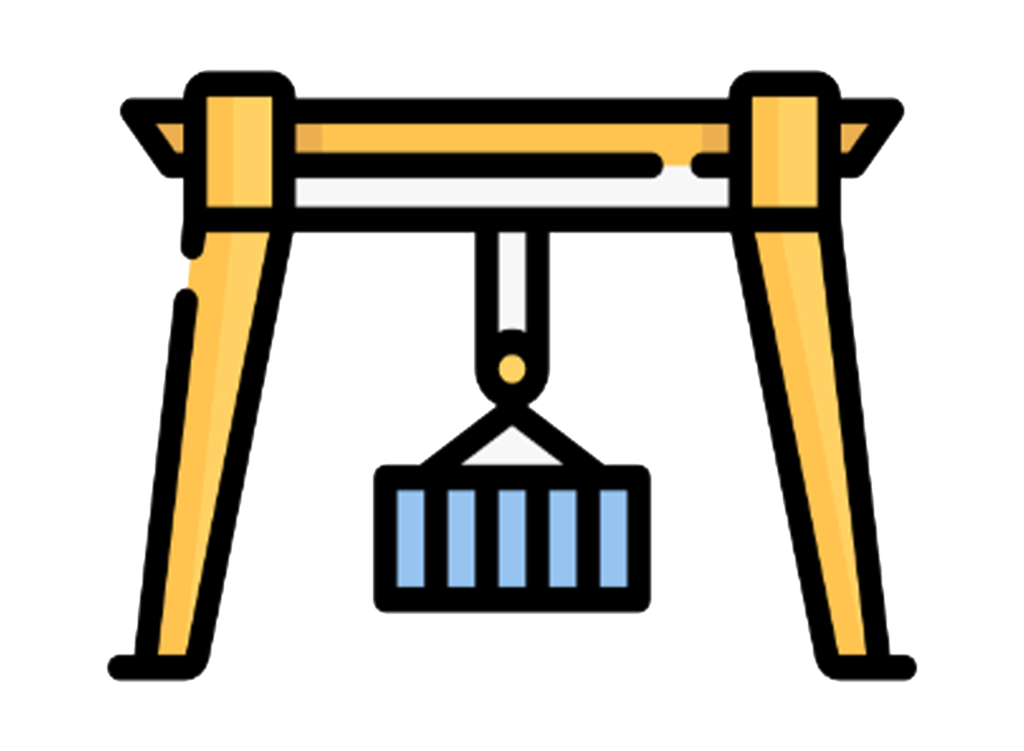Gantry cranes play a vital role in various industries, providing efficient lifting and transportation capabilities. However, the impact of wind load on gantry cranes can pose significant risks to their stability and safety. To mitigate these risks, windproof devices have been incorporated into the design of gantry cranes. This article explores the calculation and design of windproof devices for gantry cranes, focusing on the importance of controlling all the large wheels and ensuring effective braking in the face of strong winds.
Understanding Wind Load on Gantry Cranes
Gantry cranes are subjected to wind forces that can exert significant pressure on their structures. The wind load is influenced by various factors such as wind speed, direction, and turbulence. In order to ensure the safety of gantry cranes, it is crucial to accurately calculate the wind load they may experience under different conditions.
The Role of Windproof Devices
Windproof devices are essential components of gantry cranes that help to counteract the effects of wind load. These devices are designed to control the movement of the crane’s wheels and prevent the crane from overturning or experiencing instability during strong winds. By strategically applying brakes to all the large wheels, windproof devices enhance the overall stability and safety of gantry cranes.
Design Considerations for Windproof Devices
When designing windproof devices for gantry cranes, several factors need to be taken into consideration. Firstly, the windproof system should be capable of operating under various working conditions, including downhill movements and sudden strong wind encounters. Additionally, the design should account for the specific characteristics of the gantry crane, such as its load capacity and structural dimensions.
The Importance of Controlling All Large Wheels
To effectively counteract wind load, it is crucial to have control over all the large wheels of the gantry crane. By implementing a comprehensive braking system, windproof devices can ensure that the crane remains stable and resistant to wind forces. This includes both active and secondary brakes that are triggered based on the wind pressure levels.
Implementing a Secondary Brake System
To provide enhanced protection against strong winds, a secondary brake system can be incorporated into the design of windproof devices. This secondary brake acts as an additional measure to prevent excessive wind forces from affecting the stability of the gantry crane. By delaying the activation of the secondary brake, the system allows the primary brake to reduce the crane’s speed before coming to a complete stop.
Simulation and Verification
Before implementing windproof devices on gantry cranes, it is crucial to simulate and verify their effectiveness. Computational fluid dynamics (CFD) simulations can be used to model the fluid-structure interaction response and assess the crane’s behavior under different wind conditions. Full-scale measurements and comparisons with wind tunnel test results can further validate the performance of the windproof devices.
Impact of Wind Profiles and Disturbances
One key aspect to consider when designing windproof devices is the vertical profile of wind speed and its impact on the gantry crane’s structural response. Studies have shown that under downburst wind fields, disturbances caused by the front girder of double-girder gantry crane structures can significantly affect stability. This emphasizes the need for robust windproof devices that can withstand these disturbances.
Overturning Moment and Shearing Forces
Under extreme wind conditions, the overturning moment and shearing forces acting on the foundation of a gantry crane can exceed critical values. This can compromise the crane’s stability and lead to potential overturning. Therefore, windproof devices must be designed to withstand these forces and ensure the crane remains safely grounded.
Ensuring Effective Braking
The primary objective of windproof devices is to ensure effective braking of the gantry crane during strong winds. By carefully designing the braking system and considering the wind pressure thresholds, windproof devices can successfully stop the crane’s movement, preventing any potential accidents or instability.
Case Study: Designing a Windproof Device
To illustrate the practical implementation of windproof devices, let’s consider a case study of a 20-ton box double-beam gantry crane. This particular crane is equipped with a windbreaker that controls all the large wheels. The windproof device incorporates a primary brake that activates when the wind pressure is below 250N/m2 and a secondary brake that further stops the crane’s movement when the wind pressure exceeds this threshold.
Conclusion
In conclusion, windproof devices are essential for ensuring the stability and safety of gantry cranes in the face of wind load. By controlling all the large wheels and implementing effective braking systems, these devices mitigate the risks associated with strong winds. The design and calculation of windproof devices require careful consideration of wind profiles, disturbances, and the forces exerted on the crane’s foundation. Through simulations and verification, the performance of windproof devices can be validated, ensuring the overall safety and reliability of gantry cranes in various working conditions.



